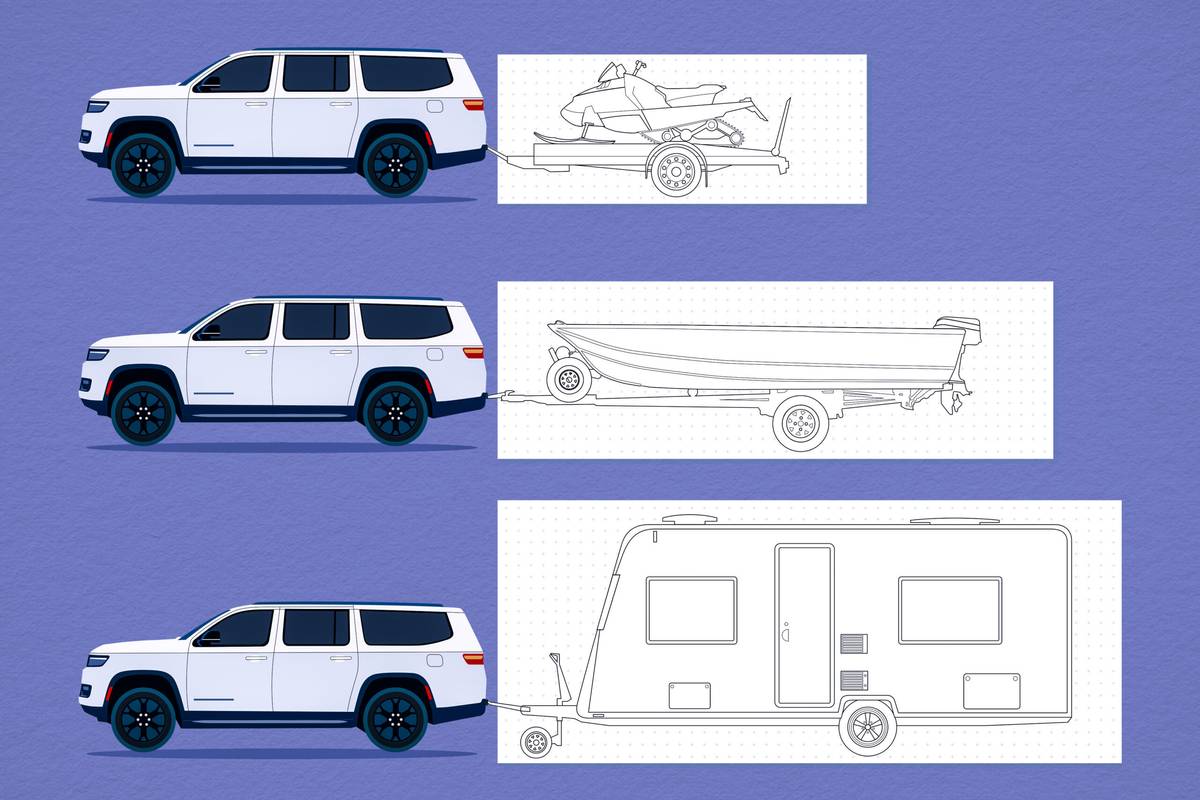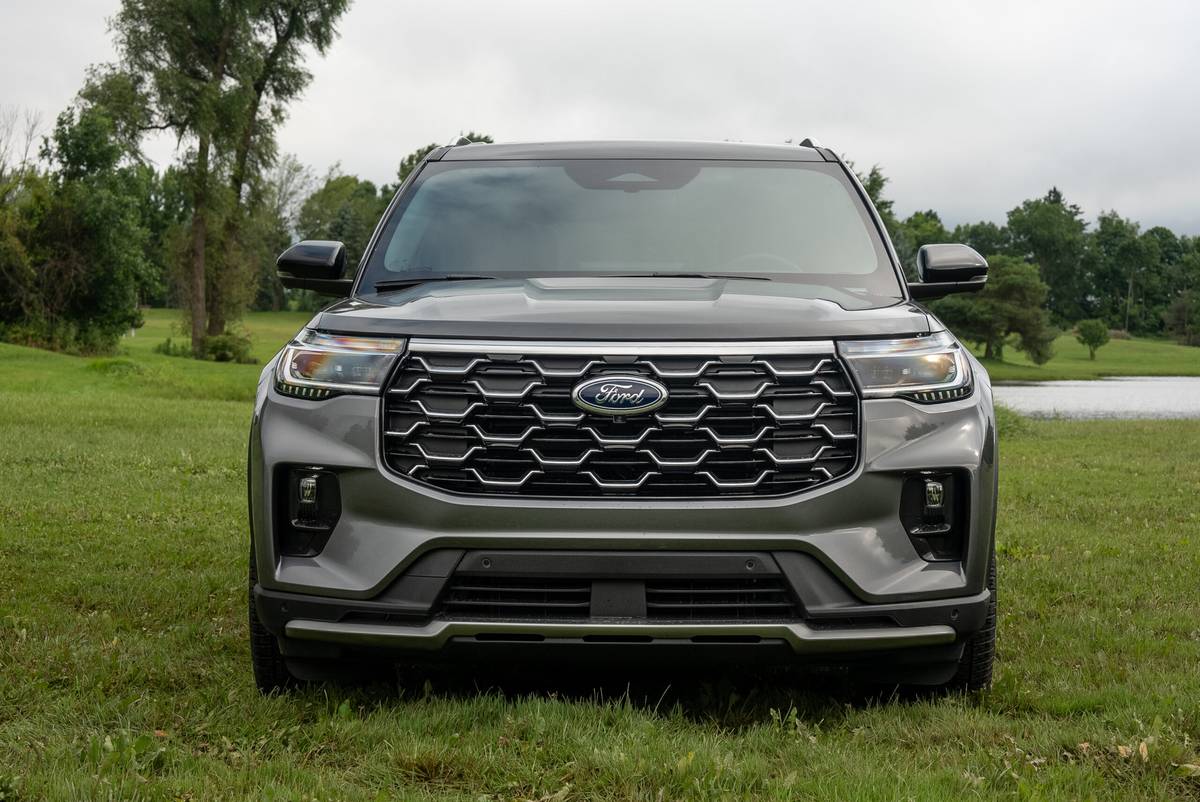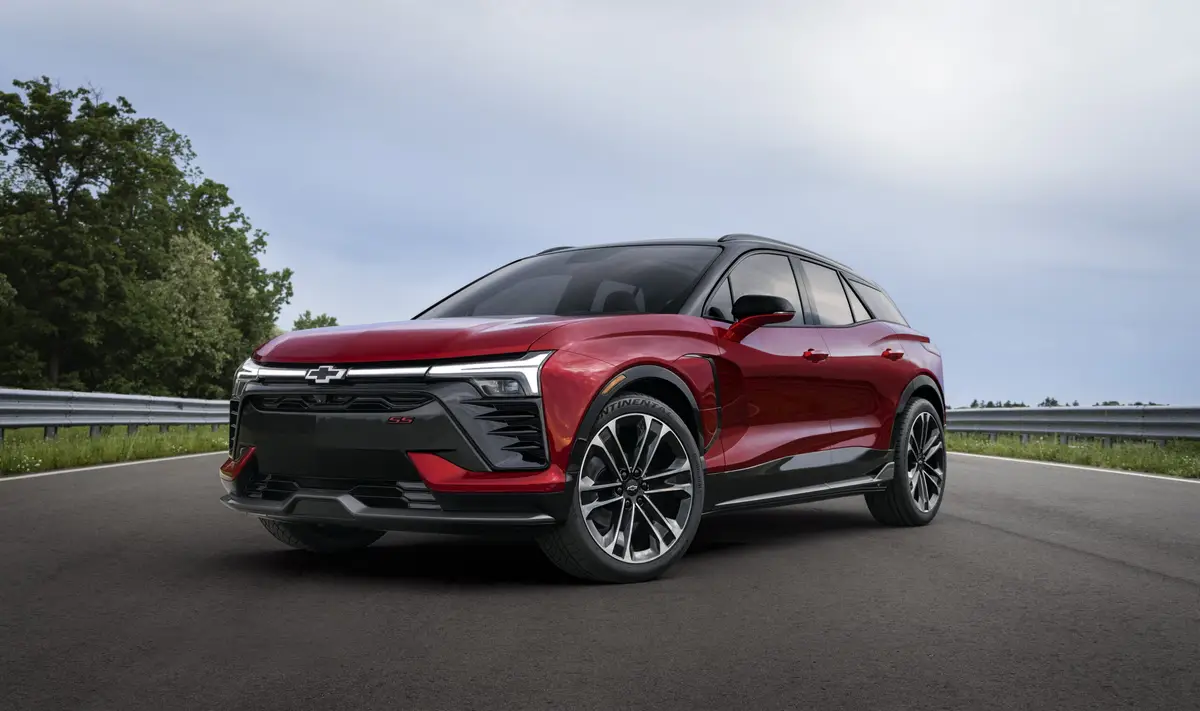Pickup Trucks 101: Towing Tips for Beginners
Towing a trailer for the first time can be a harrowing experience. There are a lot of things to do: check the tires along with lights, safety chains and coupler connections — and more. And that all needs to be done before you begin driving. For those just starting to tow, we walk you through the process below and provide tips for a safe trip.
Pre-Trip Preparations
Before hitting the road, there are a few things that need to be addressed. First, make sure you are under the for both the pickup and trailer. Also check the hitch receiver, trailer hitch and hitch ball to ensure they all meet or exceed the weight that is going to be towed. Then back up the pickup truck to the trailer. There are a variety of different trailer connections; you'll find . In short, if the connection is a fifth-wheel or gooseneck, be sure to lower the tailgate before backing up to connect and before disconnecting. With conventional bumper-pull trailers, be sure that the tailgate is up — many conventional trailers will have components that might hit the tailgate if it is down.
Before connecting the trailer, be sure that the connections that need grease are greased. Greasing the kingpin or hitch ball will greatly prolong of the life of the towing equipment, but this step is often overlooked. Certain weight-distribution hitches may have additional grease points as well.
Making Connections
Once all the equipment has been greased, hook up the trailer. Be sure to plug in the lights, connect the chains and connect the breakaway cable. The chains should be crossed, adjusted to the proper length, and not dragging on the ground. Most couplers can be locked into place, so be sure to lock them correctly. Once connected, check all the lights on the tow vehicle and trailer. Some newer vehicles have automatic systems that allow you to run the check from the driver's seat using a display screen. Even if your truck is so equipped, it's a good idea to walk around the truck and trailer to check them as well. You'll likely need a buddy to activate the turn signals and hit the brakes for you. While you're checking the lights, check all the tires on the tow vehicle and trailer for proper inflation and any damage or excessive wear.
It's a good idea to load the trailer while running your connections checks. Conventional bumper-pull trailers have a tongue weight (the down-force weight on the hitch ball) of 10 to 15 percent of the total trailer weight. For gooseneck and fifth-wheel trailers, the tongue weight is usually between 15 and 30 percent of the total trailer weight. Always be sure that the load is properly secured and won't break free under hard braking or acceleration. You can find how to .
Brake System
Once all of that is taken care of, check the trailer brakes. If your truck has a trailer brake controller and electric brakes, or electric over hydraulic brakes, push the brake pedal and shift into Drive. Apply the trailer brakes, release the tow vehicle brakes and let the vehicles roll forward until they stop. It may take a few yards for the trailer brakes to apply, so don't be alarmed if they don't work immediately. If it doesn't stop within a few yards, check the wiring connections, the settings on the trailer brake controller and the trailer brakes themselves.
For surge brakes (found on many boat trailers), testing is a little more difficult. They must be tested while moving at a higher rate of speed so they have time to engage before the tow vehicle stops the load. This may take some practice, but with experience you will find that threshold of when they are and aren't working. Check the battery, if the trailer has one, to make sure it is charged and working, otherwise the breakaway cable may not function properly.
Driving With a Trailer
Pulling a trailer requires the driver to be more attentive. However, if the trailer is correctly connected and properly loaded, driving shouldn't be any more stressful than a typical commute. Assuming you are in a pickup truck, engage Tow/Haul mode to set the engine and transmission parameters for towing.
When towing, be sure to make wide turns. The trailer will cut corners sharper than the tow vehicle. The sharper the turn, the more the trailer will cut a curb or street corner. Right turns are typically sharper than left, so be extra alert when making right turns.
Also be aware of the width of the trailer. Many trailers are significantly wider than the tow vehicle. This means there is less room for error when keeping the vehicle in its intended lane or squeezing into small spaces. Ideally, your tow vehicle has adjustable side mirrors that you've fully extended to help increase visibility (more on that below).
While towing, increase your following and passing distances to accommodate the extra weight and length. Acceleration and braking are both significantly affected by the additional weight of a trailer. Increase those distances even more in bad weather.
When descending and ascending hills, get into a lower gear early (automatic transmissions do a good job with this but usually allow drivers to manual shift as well). This will help keep the speed up while ascending and provide engine braking while descending. If the tow vehicle is equipped with an exhaust brake, be sure to engage it for all downhill driving. The exhaust brake will slow the vehicle without heating up the tow vehicle or trailer brakes. If your truck just has service brakes, slow the vehicle in 10-mph increments to keep them from overheating on long descents. Here's how: If the desired speed is 55 mph and the vehicle is accelerating past that speed, apply the service brakes until the vehicle speed is 10 mph below the desired speed, 45 mph in this example. Holding the brakes with just enough pressure to keep a constant speed has the potential to overheat the brakes and cause them to fade. Applying the brakes for shorter times and allowing them to cool before the next application can prevent this.
Use Your Mirrors
Inexperienced tow drivers often do not rely on mirrors as much as they should. Be sure to have mirrors that extend past the width of your trailer, otherwise there will be large blind spots that could create problems when changing lanes or making turns. It also can make backing up more difficult. If the tow vehicle doesn't have wide enough mirrors, you can buy extended mirrors — some even attach to existing vehicle mirrors.
Backing Up
When backing your trailer, go slowly. If you go too fast, small movements of the steering wheel can quickly cause the trailer to jackknife. If you are have trouble remembering which way to turn the wheel while backing up the trailer, put a hand on the bottom of the steering wheel. If you want to turn the trailer to the right, move your hand to the right. If you want to turn the trailer to the left, move your hand to the left. You may want to practice in an open parking lot before heading to a campground where old-timers like to watch rookies struggle. The longer the trailer, the slower it will respond to driver inputs. Many drivers who are new to towing will jackknife a trailer before they realize it and need to pull forward to adjust. The key here is to take your time. If you aren't sure about your positioning, you can always stop, pull forward and try again.
Final Tips
Tall, flat-sided trailers, such as travel trailers and enclosed cargo haulers, are more susceptible to trailer sway. This is caused by having a higher center of gravity or from wind gusts. Having a trailer hitch with sway-control arms will reduce sway, making for a safer, less stressful drive.
Additionally, having a weight-distribution hitch will help keep weight on the front wheels of the tow vehicle and reduce the weight on the rear axle of the tow vehicle. This can be beneficial for maintaining control and stability. Some weight-distribution hitches have built-in sway control.
As noted earlier, many vehicles have a Tow/Haul mode. Whenever towing or carrying heavy loads, use this mode. Tow/Haul will change the transmission and electronic control unit programming to hold gears longer and to lock up the torque converter sooner. This reduces wear on the transmission and provides better response to throttle inputs; it also allows the transmission to shift gears sooner on descents and go slower up hills.
Like most things, towing a trailer can be stressful the first time out. That stress will lessen or go away with experience, and for many towing can even become fun. If good habits are developed early, there is no reason for towing to be any more difficult than your daily commute.
Cars.com photos by Matthew Barnes and Chris Collard

Featured stories



